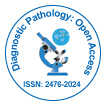The Cholesterol 24-Hydroxylase Enzyme, CYP46A1, Reduces Overexpressed Alpha-Synuclein Proteins in Human Cellular Models of Parkinson?s Disease
Received Date: Oct 11, 2024 / Published Date: Nov 11, 2024
Abstract
Background: A growing body of evidence suggests a correlation between cholesterol metabolism and the pathogenesis of Parkinson's Disease (PD). We and others have demonstrated that the activation of the cholesterol 24-hydroxylase enzyme, CYP46A1, responsible for converting cholesterol to 24S-Hydroxycholesterol (24-OHC) in the brain, is an effective therapeutic strategy for several neurodegenerative diseases as Alzheimer's disease, huntington’s disease and spinocerebellar ataxia type 3. Nevertheless, there is still much to be elucidated regarding the role of CYP46A1 in PD. Alpha-Synuclein, the symbol of pathological protein of PD, exhibits a pronounced affinity for binding to lipid membranes, especially in cholesterol-rich regions and contains a high-affinity cholesterol-binding motif in the 67-78 a region. To further our understanding of CYP46A1’s actions, we assessed not only the expression of wild-type alpha-syn but also that of the A53T alpha-syn mutant associated with the familial form of the disease as well as mutants lacking presumed cholesterol-binding sites in conjunction with CYP46A1.
Methods: We established several models of PD in human neuroblastoma SH-SY5Y cells through transient transfection with either wild-type or mutant alpha-syn or by inhibiting key genes involved in the disease using Small Interfering RNA (siRNA). The effects of CYP46A1 co-transfection on the alpha-syn expression were then analyzed by Western blot.
Results: Overexpression of human CYP46A1 leads to a significant reduction in wild-type alpha-syn protein levels in SH-SY5Y cells. Our investigations suggest that this decrease is mediated through the autophagy-lysosomal pathway. Additionally, our findings indicate that CYP46A1 may also reduce the levels of alpha-syn proteins carrying mutations in the cholesterol-binding domain or at the residue A53T, which is associated with familial pathology. Moreover, CYP46A1 retains its functionality in a cellular model of PD associated with GBA1. The gene GBA1 is involved in lipid metabolism and its deficiency represents the most prevalent genetic factor associated with an elevated risk of PD.
Conclusion: These findings offer valuable insights into the pathogenesis of PD and reveal potential therapeutic avenues involving CYP46A1, highlighting its ability to reduce alpha-syn expression, which could benefit patients with PD.
Keywords: Parkinson’s disease; CYP46A1; Alpha-synuclein; Autophagy; Human neuroblastoma cells (SH-SY5Y)
Citation: Besnard-Guérin C, Rousselot L, Audouard E, Chali F, Piguet F, et al. (2024) The Cholesterol 24-Hydroxylase Enzyme, CYP46A1, Reduces Overexpressed Alpha-Synuclein Proteins in Human Cellular Models of Parkinson’s Disease. Diagnos Pathol Open 9:240 Doi: 10.4172/2476-2024.1000240
Copyright: © 2024 Besnard-Guérin C, et al. This is an open-access article distributed under the terms of the Creative Commons Attribution License, which permits unrestricted use, distribution, and reproduction in any medium, provided the original author and source are credited.
Select your language of interest to view the total content in your interested language
Share This Article
Open Access Journals
Article Tools
Article Usage
- Total views: 894
- [From(publication date): 0-0 - Dec 01, 2025]
- Breakdown by view type
- HTML page views: 623
- PDF downloads: 271
